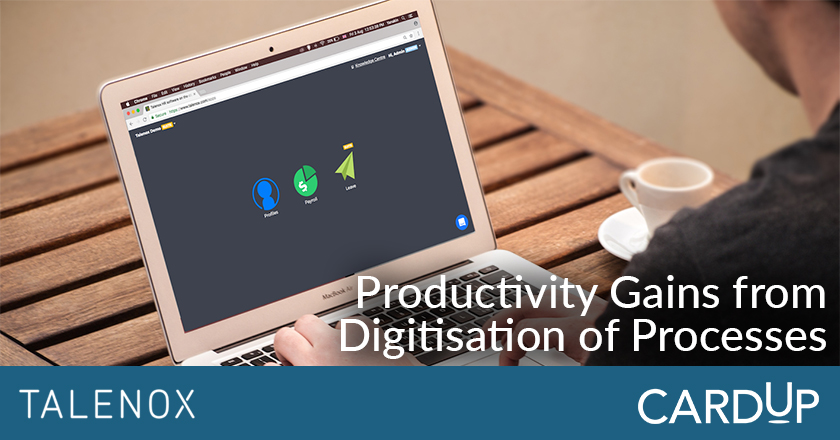With the myriad of tech tools currently available for aspiring entrepreneurs, there has never been an easier time to run a business –so if you aren’t already using any digital platforms, perhaps it’s time to consider. We look at three good reasons to start getting on board the digital train to productivity.
1. Your day-to-day involves lots of repetitive tasks
Administrative work takes a generous bite out of the day-to-day of every business owner. In the morning you’re calculating payroll, arranging shifts, and by mid-afternoon you’re counting inventory and having back-to-back meetings.

The good news is there are plenty of apps out there that help automate such repetitive tasks. Payroll, for example, is a recurring administrative task that usually doesn’t differ drastically from month to month. With a dedicated payroll platform like Talenox, you’ll be able to process payroll and automatically calculate tax contributions by saving the process into the system. The next time you need to disburse salaries, the entire process gets streamlined into just a click of a button. Compared to manually calculating the figures with a spreadsheet, or worse, with pen and paper, this is a much more proportionate and efficient way of using your time.
If you run a shift-based business, such as a cafe or a retail store, you’ll spend a lot of time scheduling employee shifts and getting people to fill in for those on leave. You can consider a time-scheduling and attendance management platform such as Deputy or King of Time. These are affordable options and are smart enough to fill shifts based on staff availability. Plus, many of them can be integrated with a payroll and leave management system. The number of hours worked by your staff will automatically be pulled into your payroll, and calculations such as tax contributions will then be calculated instantly.
2. You have limited resources and funds to begin with

Some tech tools seek to automate, others help to maximise the capabilities of the resources you already have on hand. Take for example, online payment platforms like CardUp, which allows small businesses to use credit cards to make payments that don’t typically accept cards, such as staff salaries, rent and supplier invoices. This helps maximise the resources they have, allowing the company to use their free cash on hand in other areas such as growth and inventory. . Using your credit card for such payments also come with additional benefits, such as having an instant access to credit, being interest-free up till when your next card bill is due, and creating a digital trail for your payments.

Or say you don’t have enough manpower or the financial luxury of hiring an accountant. DIY accounting platforms like Xero and QuickBooks Online make it easy for business owners to manage their own company’s ledger. For however little you pay for these accounting systems, you get the capabilities of a full-fledged accounting software, which gives you the professionalism and convenience that generic spreadsheets simply cannot.
3. You have a growing team and client base
As your business grows, you’ll find your job scope expanding in tandem. This might mean having to reach out to a wider audience, providing customer support, or managing a bigger team. Digital tools such as Basecamp allow you to oversee multiple projects and stay organised as a team, while marketing automation platforms like Mailchimp allow you to both personalise your voice and message to a large number of subscribers based on location, how long they’ve been using your services, and so on.

These tech tools are indispensable to SMEs not only because they’re affordable, but because of their ability to accommodate growing teams and client size. In addition, many of them understand that as companies grow they need more powerful features, and the notable ones are always pushing out new and useful ones regularly.
Two important things to remember about digitising your work processes is to start early and to assess the longevity of a software company. Starting early means identifying and using the right tech tools as early on as possible, so that you don’t waste precious time setting up and transferring data from your current systems and processes to a new digital platform. And before you hit subscribe, make sure you check on the creators of the software, find out what their long-term goals are, if they doll out updates regularly, and if they provide good customer support. This will save you the trouble of having to switch systems or spend too much time on troubleshooting the platform.
--
This is a guest post by the folks over at Talenox, a free cloud-based payroll and leave management platform

